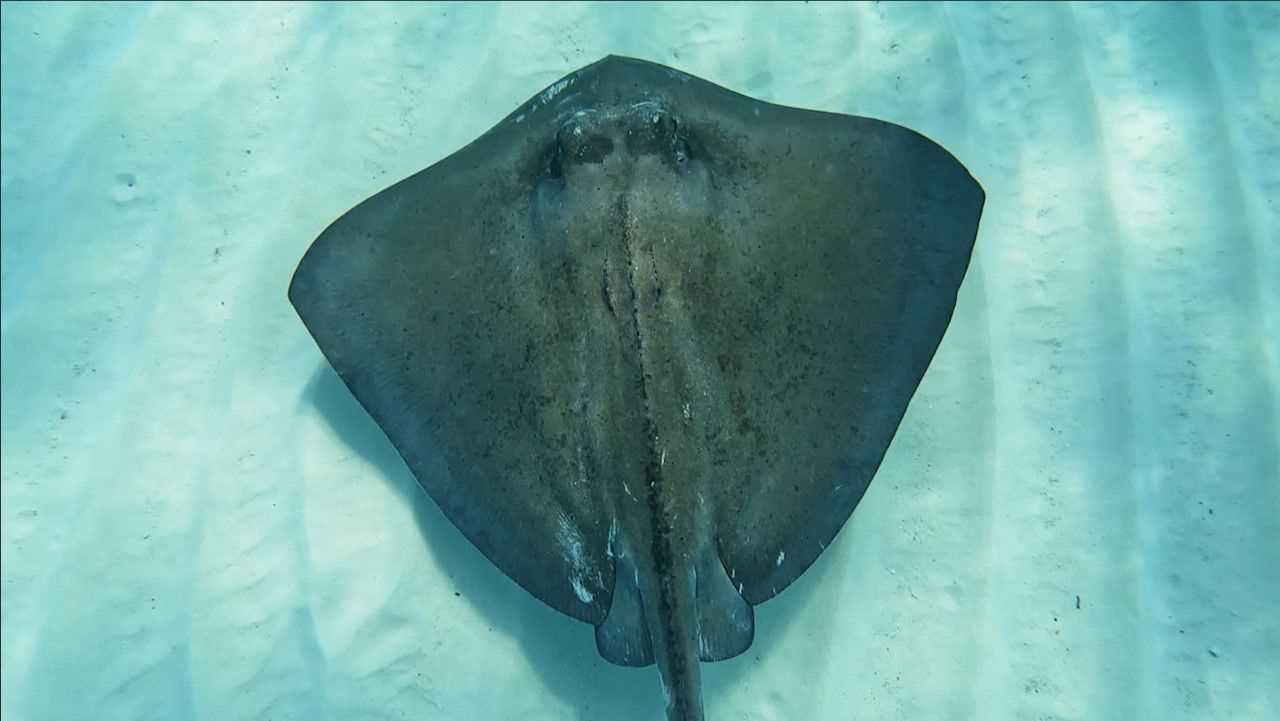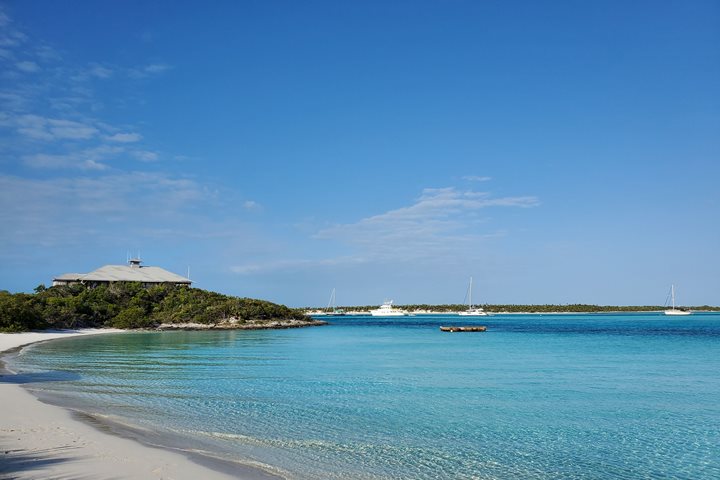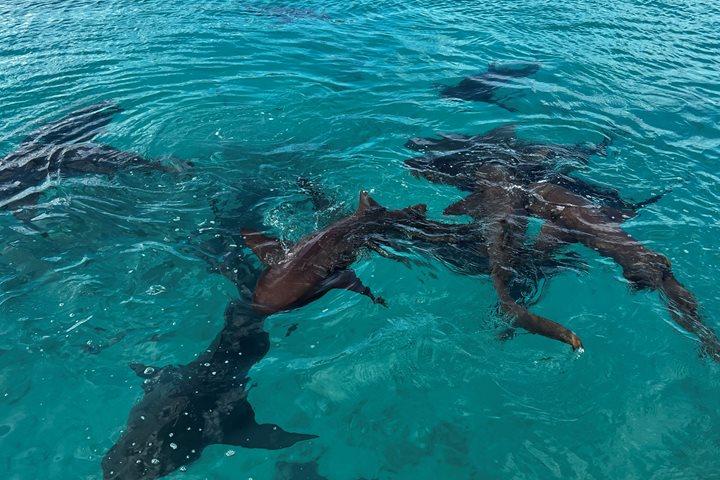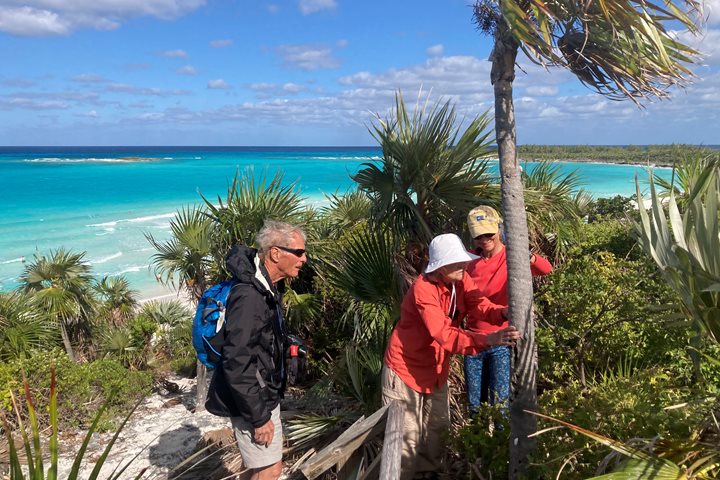It is believed that Cat Island was named after pirate Arthur Catt, who used to frequent the island. For more than four centuries, Cat Island was called San Salvador. Some people thought it was Columbus’ first landfall in the New World. However, with no one in sight, the island was ours to explore today. The morning anchorage found us at the northern reaches of the island, in the protected area of Pigeon Creek. Cloudy skies soon parted, allowing beams of golden morning sunlight to break through.
After breakfast, we headed out for our last snorkel of the voyage. Stiff northwest winds hindered our initial landing, so we found an entry on the leeward side. This provided for a calmer entry and better conditions overall. A white sand seafloor offered a great canvas for colorful purple sea fans, schools of yellow juvenile snappers, and even a large southern stingray! After the snorkel from the beach, we capped off our morning with a quick Zodiac ride into the mangroves. We had the chance to get wet again with a swim through a narrow nursery channel. The mangrove snorkel highlights a vital marine habitat. We observed schools of juvenile jacks and even a handful of the oddly shaped checkered pufferfish!
With a rising tide in the afternoon, we brought our fleet of expedition landing crafts, kayaks, and stand up paddleboards to shore to explore the calmer waters of the mangrove and its protective habitat. Guests in Zodiacs and paddlers enjoyed the serene ride up Pigeon Creek while meandering through its twists and turns. We spotted young sea turtles and stingrays as we explored some of the side channels as well as farther up the creek! What a fantastic way to finish our exploration of islands here in the Bahamas.
Photo caption and credit: Stingray. Photo by Shawn Lucas







